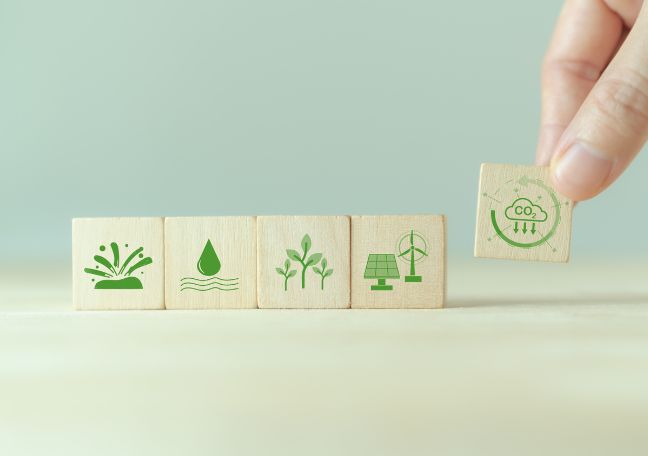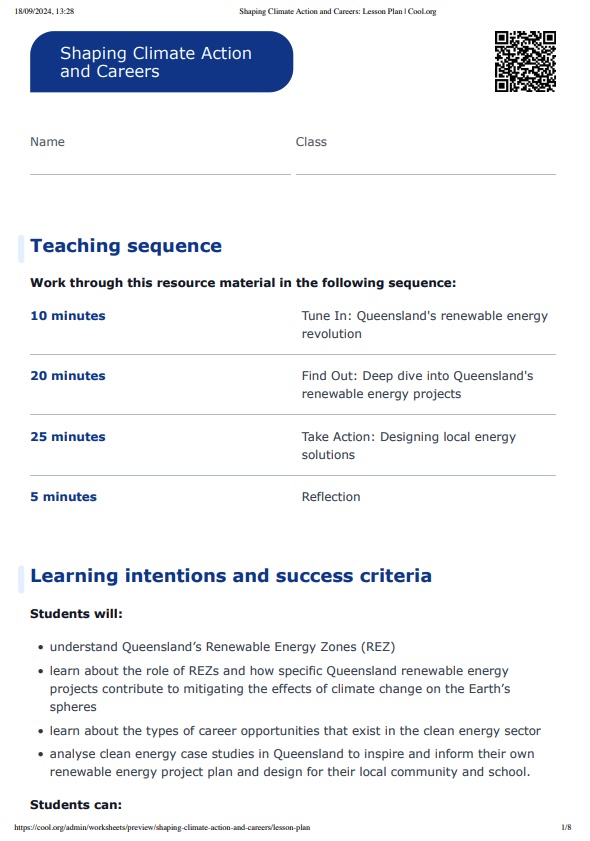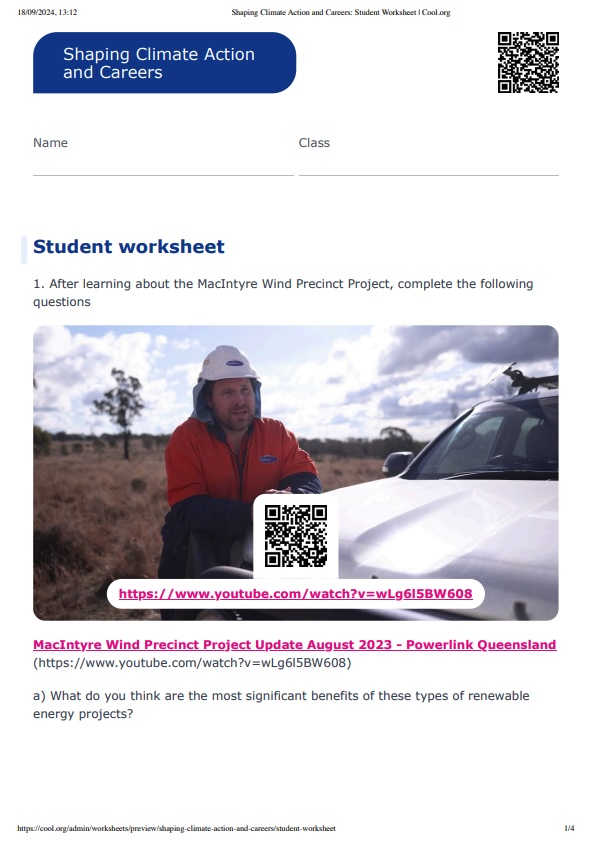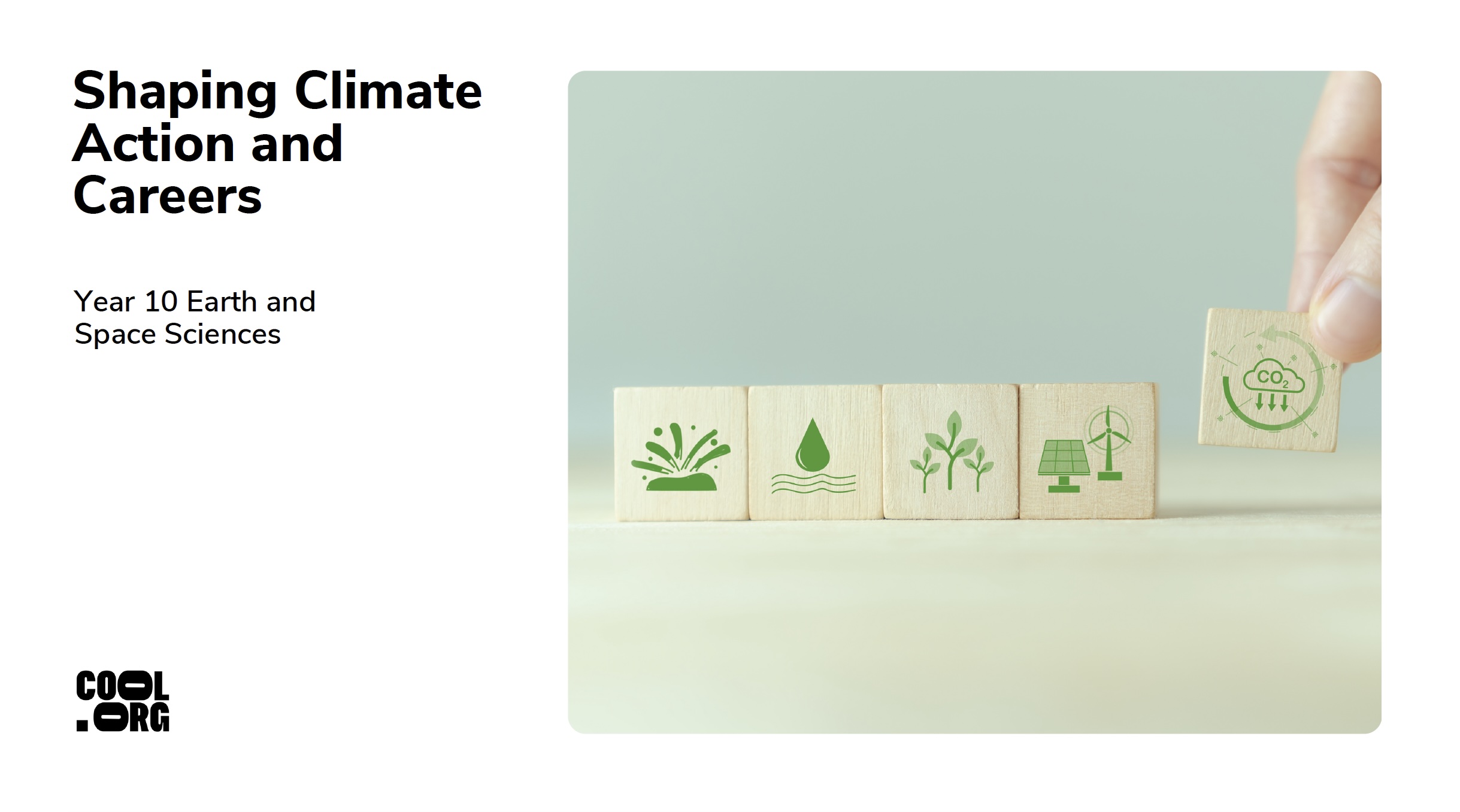Lesson summary
Students will learn about Queensland’s Renewable Energy Zones (REZs) and how they contribute to mitigating the effects of climate change on Earth’s spheres. They will explore case studies of specific renewable energy projects, investigating how they reduce emissions, the role they play in the global effort to minimise climate change and the types of career opportunities that exist in the clean energy sector. Students will draw on these case studies to plan and design their own renewable energy projects for their local community or school.
Learning intentions:
Students will...
- understand Queensland’s Renewable Energy Zones (REZ)
- learn about the role of REZs and how specific Queensland renewable energy projects contribute to mitigating the effects of climate change on the Earth’s spheres
- learn about the types of career opportunities that exist in the clean energy sector
- analyse clean energy case studies in Queensland to inspire and inform their own renewable energy project plan and design for their local community and school.
Success criteria:
Students can...
- describe the meaning of Queensland’s Renewable Energy Zones (REZ)
- outline the role of REZs and how specific Queensland renewable energy projects contribute to mitigating the effects of climate change on the Earth’s spheres
- outline the types of career opportunities that exist in the clean energy sector
- plan and design their own renewable energy project by drawing on what they have learnt about clean energy case studies in Queensland.
Lesson guides and printables
Curriculum links
Select your curriculum from the options below.
Lesson details
Skills
This lesson is designed to build students’ competencies in the following skills:
- adaptability
- collaboration
- communication
- creative thinking
- critical thinking
- problem-solving
- reflection
Curriculum Mapping
Australian Curriculum (v9.0) content description: Year 10, Earth and Space Sciences
Students learn to:
- use models of energy flow between the geosphere, biosphere, hydrosphere and atmosphere to explain patterns of global climate change (AC9S10U04)
Relevant parts of Year 10 achievement standards: Students can describe trends in patterns of global climate change and identify causal factors.
NSW Syllabus outcomes:
- analyses the impact of human activity on the natural world (SC5-ENV-01)
- evaluates current and alternative energy use based on ethical and sustainability considerations (SC5-EGY-01)
General capabilities: Critical and Creative Thinking, Personal and Social Capability
Cross-curriculum priority: Sustainability
Level of teacher scaffolding: Medium - Facilitate discussion, group work and research.
UN Sustainable Development Goals
UN SDG 13: Take urgent action to combat climate change and its impacts
- Target 13.3: Improve education, awareness-raising and human and institutional capacity on climate change mitigation, adaptation, impact reduction and early warning.
Resources Required
- Device capable of displaying audiovisual material
- A3 Paper
- Planning Posters
- Individual student devices for research
- Student Worksheets
Additional Info
This lesson has been developed in partnership with the Queensland Government through Queensland's Clean Energy Workforce Roadmap. Cool.org would like to acknowledge and express our gratitude to the Clean Energy Council for the expertise and advice provided in creating these resources.
Related Professional Learning
STEM Professional Learning Pathway
Quick summary: Enhance your practice with Cool.org's STEM Professional Learning Pathway. This year-long plan is designed to build your skills and capabilities in teaching STEM, ultimately transforming you into a STEM Innovator. The pathway will prepare you to integrate STEM education effectively, adapt to technological advancements and inspire students to succeed in a rapidly evolving world.





Welcome back!
Don't have an account yet?
Log in with:
Create your free Cool.org account.
Many of our resources are free, with an option to upgrade to Cool+ for premium content.
Already have an account?
Sign up with:
By signing up you accept Cool.org's Terms and Conditions(Opens in new tab) and Privacy Policy(Opens in new tab).